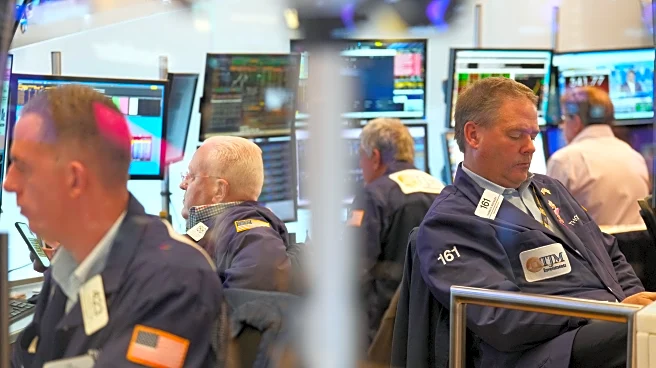What's Happening?
The National Retail Federation has projected that U.S. holiday sales will surpass $1 trillion for the first time in 2025. Despite economic uncertainties and geopolitical tensions, the forecast suggests
a robust consumer spending season between November 1 and December 31. The expected growth rate for retail sales is between 3.7% and 4.2%, which is more optimistic compared to Deloitte's forecast of 2.9% to 3.4%. This positive outlook is beneficial for major retailers and e-commerce companies such as Amazon, Walmart, and Costco. However, the impact of import tariffs is anticipated to increase holiday costs by $40.6 billion, according to LendingTree.
Why It's Important?
The forecasted increase in holiday sales is significant for the U.S. economy, indicating consumer resilience despite broader economic challenges. This growth benefits major retailers and e-commerce platforms, potentially boosting their revenues and stock performance. The projection also highlights the importance of consumer spending as a key driver of economic activity. However, the anticipated tariff impacts could affect consumer prices, posing challenges for both retailers and consumers. The ability of consumers to maintain spending levels amidst rising costs will be crucial for sustaining economic momentum.
What's Next?
Retailers and e-commerce companies are likely to strategize around the forecasted sales growth, potentially increasing marketing efforts and inventory to capitalize on the holiday season. The impact of tariffs may lead to adjustments in pricing strategies or sourcing decisions to mitigate increased costs. Analysts and investors will closely monitor retail performance and consumer spending trends, which could influence stock valuations and market dynamics. Additionally, policymakers might consider addressing tariff impacts to support consumer spending and economic stability.
Beyond the Headlines
The forecast underscores the cultural significance of holiday spending in the U.S., reflecting consumer priorities and economic behavior during festive seasons. The resilience in consumer spending amidst economic uncertainties may indicate broader societal trends towards prioritizing holiday traditions and experiences. The interplay between tariffs and consumer costs also raises questions about trade policies and their long-term implications for domestic markets.













